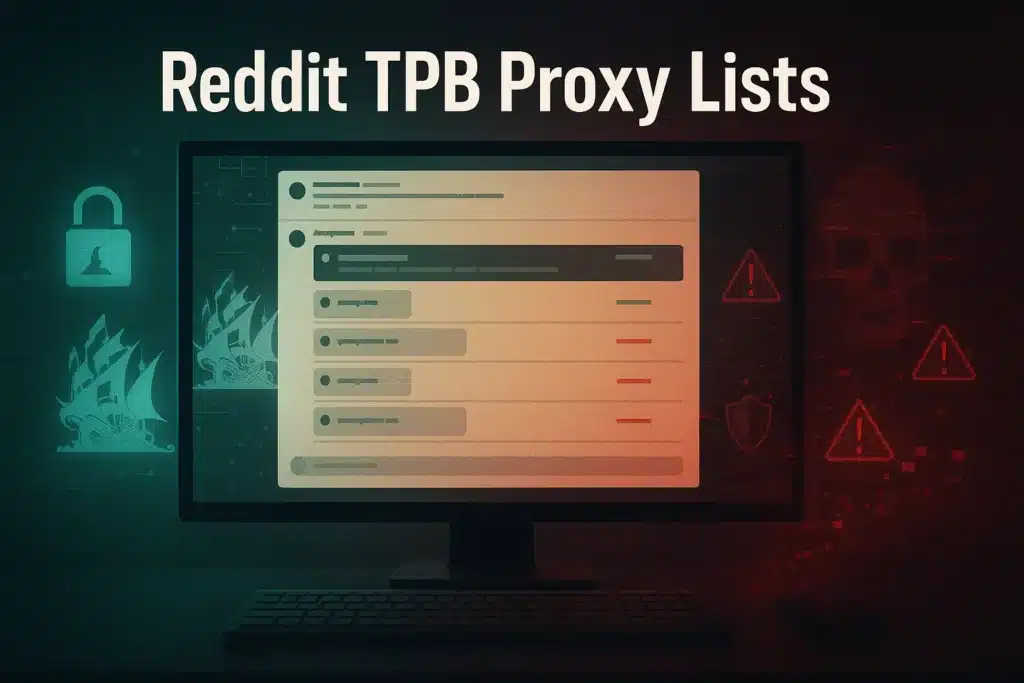The internet shapes much of our business and personal aspects. Datacenter proxies with IP rotation, operating from data centers, offer a robust platform for managing IP addresses, enabling users to navigate the web with a veil of privacy and access geo-restricted content with ease.
By leveraging IP rotation, they mitigate the risk of being blocked or detected when performing tasks like web scraping, internet marketing, and competitor analysis, and they also improve the efficacy of SEO optimization and market research endeavors.
We will elucidate their operational mechanics, the technology that underpins IP rotation, and how they compare to static proxies.
The article will also talk about what the future holds for datacenter proxy technology, including how proxy pools will change, how bandwidth will be used, how to manage proxy servers, and how to make the best configuration for tasks like ad verification and advanced proxy automation.
| Interested in buying Datacenter Proxies with IP Rotation? |
| Check out our Datacenter Proxies |
Understanding Datacenter Proxies
Table of Contents
ToggleDatacenter proxies are intermediary services that provide IP addresses and are not affiliated with any Internet Service Provider (ISP). These proxies originate from secondary corporations, such as data centers and cloud hosting services.
Unlike residential proxies, which are tied to actual residential addresses provided by ISPs, datacenter proxies are part of a controlled environment managed by private companies.
This setup offers users completely private IP authentication, enhancing anonymity while browsing the internet.
These proxies are renowned for their speed and high performance, making them ideal for tasks requiring quick data retrieval, such as web scraping and large-scale data collection. Datacenter proxies typically offer both shared and dedicated IP options.
Shared IPs can be more affordable and used by multiple clients at once, whereas dedicated IPs give a single user a consistent IP address, which is advantageous for operations needing a reliable online presence.
How They Differ from Residential Proxies
While datacenter IPs are sourced from enterprise-owned servers in data centers, residential proxies use real IP addresses assigned to actual devices by ISPs.
This fundamental difference impacts their detectability and reliability in various use cases.
- Source of IP Addresses: Datacenter proxies are assigned IP addresses from a server located within a data center. These IPs frequently come in blocks, making them simpler to identify and potentially block if sophisticated security systems on target websites detect them. In contrast, residential proxies offer IPs that are harder to detect because they come from a vast pool of real-user devices, providing more genuine-looking traffic.
- Performance and Speed: Datacenter proxies generally provide faster connections due to shorter request routes from the server to the target site. This makes them suitable for high-speed data processing tasks. The higher risk of IP blocking due to the sequential nature of IP addresses in datacenter blocks, however, might outweigh the speed advantage.
- Anonymity and Detection Risk: Although both proxy types offer anonymity, websites using cutting-edge security measures are more likely to flag datacenter proxies. This is due to their non-ISP origin and the predictability of their IP blocks. Residential proxies, offering IPs that rotate among real devices, typically face lower detection risks, making them preferable for accessing more strictly controlled websites.
- Cost Considerations: Datacenter proxies are generally less expensive than residential proxies due to the inherent cost of sourcing and maintaining IPs from real residential connections. Businesses requiring a high volume of proxies might opt for datacenter proxies for cost-effective solutions, although they may need to manage the higher risk of IP blocking.
Also read: Top 5 Best Rotating Datacenter Proxies
The Technology Behind IP Rotation
IP address rotation is a critical technique employed in the management of digital identities across the internet. This procedure involves methodically changing the IP address that a device uses to connect to the internet, improving anonymity, security, and information access.
Mechanisms and Algorithms
The fundamental mechanism behind IP rotation hinges on the use of a pool of IP addresses that are dynamically assigned to connections.
Depending on the configuration, IP rotation can be executed based on predefined time intervals or triggered after a certain number of requests have been made.
This flexibility allows for tailored strategies that align with specific operational needs, such as web scraping or data mining.
Proxy servers play a pivotal role in this technology. They act as intermediaries between the user’s device and the internet, routing requests through various IP addresses.
The sophistication of proxy rotation is evident in tools like Proxy Rotators, which automate the change of IP addresses using algorithms that can opt for random selection from a designated list.
Having this automation in place is vital for tasks that involve extracting large amounts of data and minimizing blockages on specific websites.
Technical Benefits
Rotating IP addresses has many practical benefits. Firstly, it significantly reduces the likelihood of detection and blocking by websites, as the rapidly changing IPs can mimic the behavior of multiple users from varied locations.
Web scraping and similar applications greatly benefit from this since they require uninterrupted access to large amounts of data.
Secondly, IP rotation enhances privacy and security by obscuring the user’s actual IP address and geographic location, making it more difficult for third parties to track online activities or launch targeted attacks.
Sensitive activities, such as competitor analysis and market research, require this degree of anonymity.
Moreover, the use of IP rotation in proxy servers, particularly data center proxies, ensures high-speed data processing and efficient bandwidth usage. These proxies are designed for rapid IP switching, offering robust performance that is essential for real-time data operations.
In conclusion, the technology behind IP rotation is a cornerstone of modern digital practices, facilitating a wide array of applications from data security to market analytics.
By understanding and implementing this technology, businesses and individuals can significantly enhance their online capabilities and protect their digital footprints effectively.
Also read: Using Rotating Proxy IPs Multiple Times
Comparative Analysis: Rotating vs. Static Proxies
Anonymity Levels
Static proxies and rotating proxies offer distinct levels of anonymity, each suited to different online activities. Static proxies provide a consistent IP address throughout a session, which can last anywhere from 5 to 45 minutes.
This consistency can be advantageous for tasks requiring a stable online identity, such as managing accounts or completing multi-step processes like online purchases.
However, the fixed nature of the IP address in static proxies makes them more susceptible to being detected and blocked, particularly if used for activities like e-commerce web scraping or making excessive requests from the same IP.
On the other hand, rotating proxies significantly enhance anonymity by assigning a new IP address for each request from a large pool, making it virtually impossible to track online activities.
This feature is especially beneficial for users requiring high levels of privacy, such as when browsing the web anonymously or accessing geo-restricted content.
Rotating proxies also help in bypassing anti-bot measures, reducing the likelihood of being detected and blocked during complex data scraping tasks.
Performance and Reliability
When evaluating the performance and reliability of static versus rotating proxies, several factors come into play. Static proxies are known for their speed and stability, providing a reliable connection that is ideal for tasks requiring a consistent online presence.
These proxies tend to offer high uptime and decent speed, making them suitable for less complex websites where a faster pool of static IPs can be beneficial.
Conversely, rotating proxies are designed to handle tasks that involve heavy data scraping or require a high level of anonymity. The performance of rotating proxies can vary depending on the quality of the proxies, the speed of the servers, and the specific requirements of the task.
While they may be slower due to more complex mechanics involving additional hops and gateway proxy servers, high-quality rotating proxy providers can mitigate these issues by offering connections through fast servers with high bandwidth and low latency.
Additionally, rotating proxies provide precise geographic targeting by utilizing IP addresses from a vast array of residential and mobile devices, allowing for more effective market research and competitor analysis at the city or state level.
However, the maintenance and sourcing of a large pool of IP addresses make rotating proxies generally more expensive than static ones.
In conclusion, the particular requirements of the task at hand—taking into account things like required anonymity levels, risk of detection, performance needs, and budget constraints—should guide the decision between static and rotating proxies.
Also read: Rotating Datacenter Proxies: The Right Choice Over Residential Proxies?
Applications Across Industries
Marketing and SEO
Datacenter proxies play a crucial role in the realm of marketing and SEO, where they enhance various campaign strategies through efficient and anonymous data handling.
These proxies assist in geo-referenced keyword monitoring, allowing marketing professionals to track keyword performance across different locations.
This skill is critical for comprehending SEO regional differences and making sure content performs well in all intended regions.
Moreover, datacenter proxies facilitate the safe and efficient scraping of web data for SEO audits, competitor analysis, and ad verification. Marketers can conduct in-depth SEO analysis using proxies without worrying about search engines blocking them or penalizing them.
This includes the analysis of competitors’ marketing strategies and the optimization of ad placements to ensure compliance with regional advertising standards.
Cybersecurity
In cybersecurity, datacenter proxies serve as a robust defense mechanism against various online threats.
With the help of content delivery networks (CDNs) and reverse proxies, which spread traffic across multiple servers to stop attacks, these proxies are very important for keeping you safe from distributed denial of service (DDoS) attacks. CDNs and reverse proxies also play a crucial role in protecting against other types of cyber attacks. When configured properly, they can help mitigate risks associated with DNS attacks by providing additional layers of protection and reducing the impact on your network. By spreading traffic across multiple servers, CDNs and reverse proxies make it much more difficult for attackers to pinpoint specific targets in DNS attacks.
Additionally, datacenter proxies enable the secure scraping of emails and the prevention of malicious content from reaching corporate networks.
This is particularly important for maintaining the integrity of business communications and safeguarding sensitive corporate data.
Data Mining
Datacenter proxies significantly contribute to the field of data mining by enabling the extraction of large volumes of data from diverse online sources.
This process supports pattern recognition, anomaly detection, and cluster detection, which help identify market trends and customer preferences.
By facilitating access to a broad range of data points, proxies allow businesses to develop sophisticated models for predicting consumer behavior and optimizing product offerings.
Furthermore, the integration of datacenter proxies in data mining applications supports advanced analytics and machine learning tasks. These tasks require the aggregation and analysis of vast datasets to build predictive models and drive strategic business decisions.
Datacenter proxies enhance these processes by providing a stable and secure environment for data collection, ensuring that businesses can leverage big data to its full potential without compromising on speed or security.
Also read: Alternative Data for Startups
Future Trends in Datacenter Proxy Technology
AI Integration
The integration of Artificial Intelligence (AI) into datacenter proxies marks a significant advancement in proxy technology.
AI-driven demand is reshaping many industries. This necessitates data centers with enhanced processing power to handle complex algorithms and extensive data analytics. This shift meets higher computational demands and also refines the infrastructure for greater energy efficiency.
AI’s role extends beyond demand, providing solutions that streamline operations across the board. In project management, AI can optimize timelines and resource allocation, ensuring that projects are completed efficiently and within budget.
Operational efficiency is further enhanced through AI algorithms capable of predictive maintenance and energy optimization. These applications of AI lead to more sustainable and cost-effective data center operations.
Advanced IP Rotation Techniques
Advanced algorithms now enable the dynamic adjustment of proxy settings. Thus allowing datacenter proxies to learn from past interactions and adapt to user behavior more effectively.
This capability improves the efficiency of bypassing restrictions and optimizes overall proxy performance.
The transition to IPv6, driven by the exhaustion of IPv4 addresses, is another critical trend. IPv6 offers a vastly expanded address space. As networks across the globe embrace this new protocol, this becomes increasingly important for the expansion of proxy services.
This transition supports the proliferation of proxies, ensuring smoother communication and enhanced connectivity within the evolving internet infrastructure.
Furthermore, the development of blockchain technology in proxy services promises enhanced security, transparency, and reliability.
By utilizing decentralized networks, blockchain-based proxies ensure tamper-proof data transmission and resistance to censorship. These are vital in applications requiring high levels of trust and verifiability.
As datacenter proxies continue to evolve, these advanced technologies address current limitations and open new avenues for secure, efficient, and adaptive online operations.
Also read: Unlimited Datacenter Proxies
FAQs
Q1. What exactly is a rotating IP proxy?
A rotating IP proxy is a type of proxy server that frequently changes the IP address assigned to its users. This can occur after every request or after a set time interval.
The frequent change in IP addresses enhances user anonymity and security. Thus, it makes it difficult for websites to track or block the user.
Q2. How do residential proxies differ from datacenter proxies?
Datacenter proxies are generally less expensive. They may not perform as well when accessing more secure sites. Mainly, because they are associated with servers housed in data centers.
Residential proxies, in contrast, link to actual individual internet users. They receive compensation for allowing their IP addresses to be part of the proxy network. This typically makes the proxies more expensive.
Q3. What distinguishes a residential proxy from a rotating proxy?
The primary difference lies in the source of their IP addresses. Residential proxies use IP addresses from real people’s internet connections, making them appear more legitimate. Datacenter proxies, typically static, originate from servers located within data centers.
Rotating proxies usually belong to the residential category, although there are exceptions where they can also be datacenter-based.
Q4. What is a DCH proxy?
A DCH (Data Center Hosting/Content Delivery Network) proxy involves IP addresses that may come from hosting providers, data centers, or content delivery networks.
Not all IPs from these sources are proxies. Though there is still reason to be wary of online orders coming from such an IP.
Also read: Datacenter Proxies Use Cases
Conclusion
Datacenter proxies with IP rotation play an important role in securing online anonymity. They provide efficient access to geo-restricted content and bolster a host of business operations, from SEO optimization to cybersecurity measures.
The ongoing advancements in technology suggest a bright horizon for improving online operations. Thus, it’s a critical area for continued research and application.
Still looking to deepen your understanding of which datacenter proxies with IP rotation providers lead the market? Read our rotating datacenter proxies providers comparison, a valuable resource for making informed decisions.
How useful was this post?
Click on a star to rate it!
Average rating 0 / 5. Vote count: 0
No votes so far! Be the first to rate this post.
Tell Us More!
Let us improve this post!
Tell us how we can improve this post?


